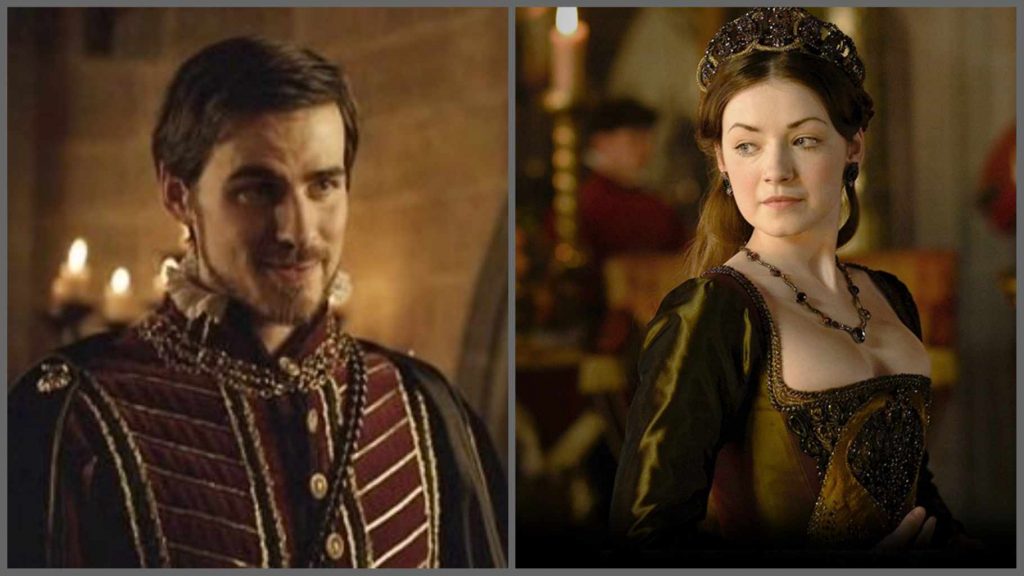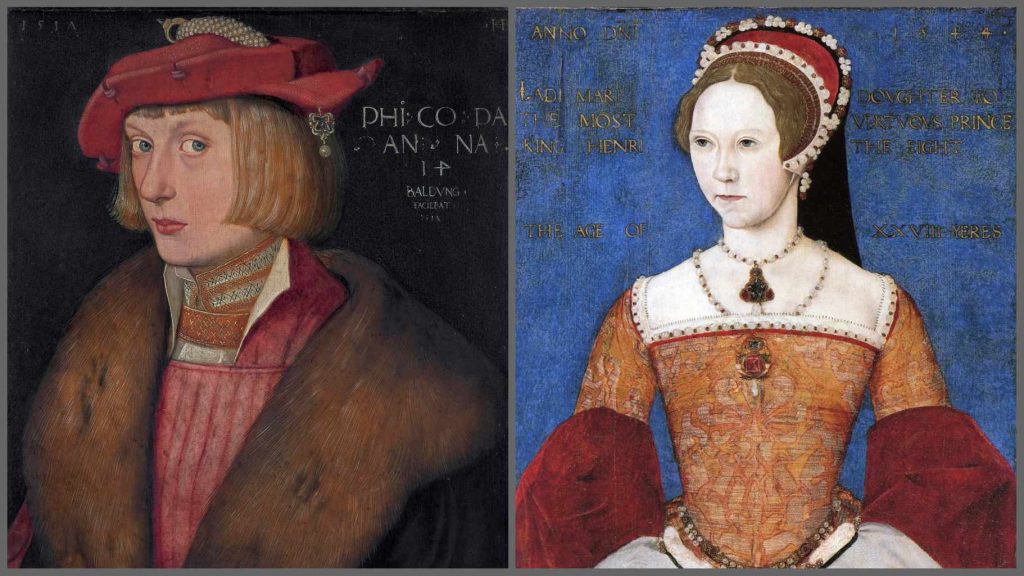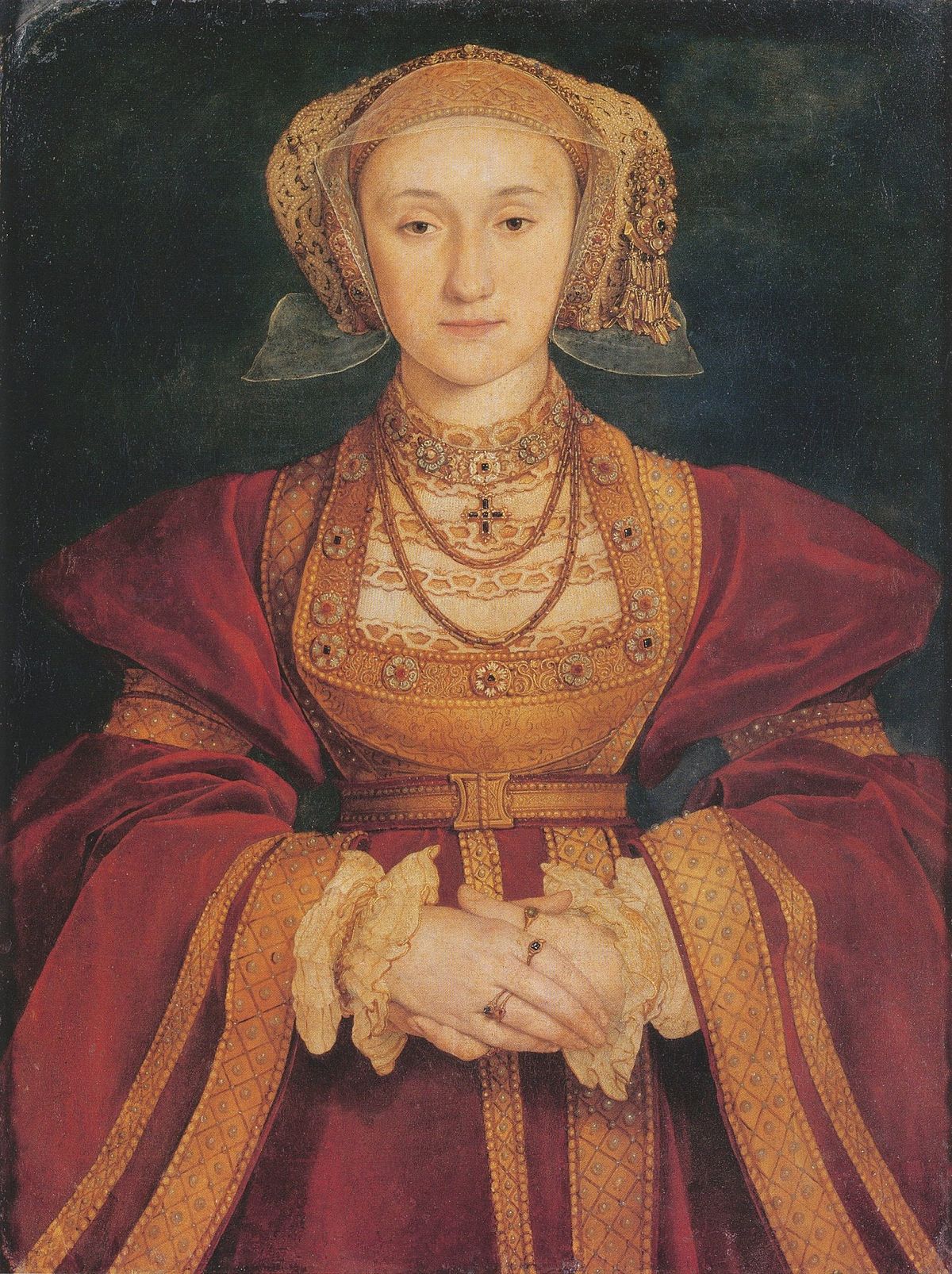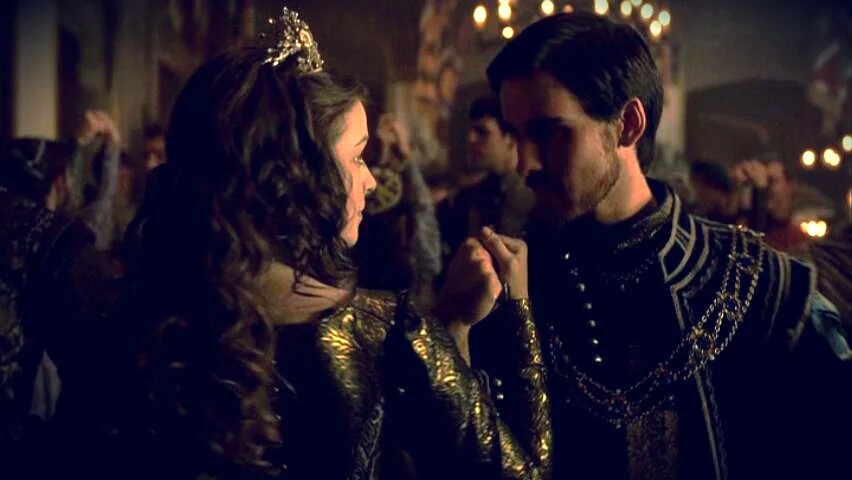Season 4 of the notoriously innacurate but eminently watchable The Tudors ends with the breakdown of Henry VIII’s marriage to his German bride, Anne of Cleves. We see the marriage dissolve, it’s chief engineer Thomas Cromwell go to the block for his role in it, and Henry marry his fifth wife; Catherine Howard. But in the season finale, we also see a snippet of a side story with a romance between Henry’s daughter, Mary Tudor, and Anne of Cleves’ cousin, Philip of Bavaria. It’s actually an incredibly sweet story and unlike a lot of The Tudors is actually based on historical events! Le gasp!
Henry VIII missed an obvious opportunity to settle the succession through his daughters. Mary I has often been compared to the daughter of Henry I, Empress Matilda, as they were both women queens in a time when it had never been attempted. There is some debate still over whether Matilda could be considered the first queen of England. But they could also have had this in common; if Henry VIII wasn’t so preoccupied with settling the succession himself then he could easily have done so through his daughters. Instead, he betrothed them and un-betrothed them with an eye to making alliances that changed almost as rapidly as his spouse. By the time Philip, Duke of Palatinate-Neuberg (simplified to Bavaria in the show) came a-courting, Mary’s name had been involved in marriage negotiations with five different matches, the first when she was just two years old. Nothing came of any of them.

We know little about Philip of the Palatinate-Neuberg. His duchy was one of many small European states that made up the Holy Roman Empire which would later become part of the Bavarian states which would then go on to form a part of Germany. T’was the time of tiny European city states and Philip ruled over one of them alongside his elder brother, Otto. He was a third cousin, maternally and paternally, of Anne of Cleves who, in 1539, was being considered as Henry VIII’s fourth wife. As part of these negotiations, Mary was also being considered as a potential match for Anne’s brother, William, Duke of Cleves. They were the same age but of opposing faiths and as with all of Mary’s negotiations they came to nothing.
By the end of 1539, Henry’s marriage to Anne of Cleves was a go. The initial treaties had been signed, contracts had been confirmed, and all that was left to do was for Anne to actually journey to England to be married in person. Anne was due to arrive in the New Year but a little before this, Duke Philip came to England specifically to court the Lady Mary. He was apparently eager enough to come alone a month before his cousin would be making the same journey. If he could have gotten away with it, it’s likely he would have gone straight to Mary himself but he would never have been granted an audience without her father’s permission, so instead he went to Greenwich to see the king.
His presence caused a small stir at court. If Henry was at any point serious in his intentions to marry off his daughter, there were plenty of suitors but none had ever presented themselves in person. Nor had he any previous correspondance to suggest that his suit would be welcome. He just showed up and hoped for the best. It was a bold move and one that paid off. He offered his military service to Henry and presented his suit for Mary’s hand, raising even more eyebrows when he insisted on courting her in person rather than through the usual round of intermediaries and ambassadors.
Henry was obviously impressed or at least happy to engage with another suitor that might make his European rivals sweat a little at the prospect of an even stronger Anglo alliance with the Protestant states. The Earl of Southampton, Thomas Wriothesley, was dispatched to the household Mary shared with her younger brother to inform her of Philip’s intentions. Mary’s response was a reflection of the knife’s edge Mary had lived since her father’s eye was caught by a certain Mistress Boleyn. Having said nothing more concrete than not wanting to convert to Lutheranism, Mary simply committed herself to her father’s hands and promised obedience to whatever he thought right. Philip arrived a few days later.

At the time of their meeting on the 22nd December 1539, Mary was twenty-three and Philip thirteen years older than her at thirty-six. For a couple entertaining their first marriage they were on the older side. For royals they were practically ancient. It’s unlikely what common ground existed between the two. He was a staunch Lutheran who had never heard a mass and she was the daughter of one of the most Catholic queens in Europe. He had commanded armies in battle which had earned him the moniker ‘the Fighter’ or ‘the Warlike’ while Mary had had a relatively comfortable and lavish upbringing, the years she had been forced to wait on her younger sister notwithstanding. They had only a little Latin to communicate with as he spoke no English and she no German. What couldn’t be bridged between them passed through an interpreter but the meeting seems to have been a success.
The two walked in the gardens, enjoying each other’s company, and talking before Philip presented her with a diamond encrusted cross decorated with three pearls and one larger statement pearl. It was placed with the rest of her jewels (possibly misattributed as a gift from her father) and though Southampton offered to find a buyer for the piece, there is no record of it ever being sold. But this was all a prelude to the ultimate display of affection; Philip kissed her and told her that he wanted to marry her.
Mary’s response was measured; she would of course do nothing without her father’s permission, but I refuse to believe that she wasn’t at the very least flattered. Mary should have been married by now. She was five years older than her father had been when he married her mother and this was the first time and only time a man had come to her with marriage on the mind. His affection for her was obvious and I find it beyond hard to believe that a young woman who had suffered so much emotional turmoil and uncertainty wouldn’t have responded to that. Even now, her father maintained her illigitimacy and she had been removed from the line of succession because of it. A Protestant duchy might not have been Mary’s choice of kingdom but she might well have seen it as an escape from the English court and her father’s precarious favour. Not that she expressed even a hint of this. She was ‘your grace’s most humble and obedient daughter and handmaid.’ If Mary had thoughts in either direction she didn’t voice them. But Philip certainly left Mary’s side in the excited belief that, as her father had already agreed to the courtship, there was no impediment to their immediate marriage.
Back at court, Henry seemed quite happy for the marriage to go ahead and a draft contract was drawn up. Mary was required to forfeit her place in the succession (which she had already been excluded from) and would be married with a dowry of £7,000. Visiting ambassadors were shocked at the speed with which events were moving and speculated that the wedding would take place in a matter of weeks. Things moved so quickly that at one point, the ambassadors thought that they had already gotten married in secret. They hadn’t and Philip had actually left the country expecting to return shortly to attend his own wedding.
But in the New Year, Henry married Anne of Cleves and the relationship quickly turned sour. Focus swiftly moved from Mary’s potential nuptuals to dissolving the king’s inconvenient marriage. Philip was still clearly committed to Mary and he attempted to return to England twice that year but he was unsuccessful in getting an audience with Henry let alone his potential bride. With the dissolution of the Cleves marriage and Henry already moved on to wife #5 there was no need for a German alliance. Still, Henry kept the prospect of Mary’s marriage to Philip on the table to antagonise the Catholic powers when he needed to.

Philip was apparently not discouraged by this turn of events and attempted to return to England, looking to see Mary. In 1543, four years after their initial meeting, Philip was finally granted another audience with his potential bride. Once again, Mary revealed no outward emotions to seeing him and submitted entirely to what her father thought best. Her father however, did not have Mary’s best interests at heart as he openly attested to. It was clear that he would not marry her to a Catholic power which might recognise her as his legitimate heir, and his relations with the Protestant nations changed often enough that he was unlikely to tie himself to one. Mary knew and acknowledged this though it didn’t bring her any happiness. When it became clear that she was not going to marry Philip she said, “It was folly to think that they would marry me out of England, or even in England. There was nothing to be got but fine words, and while my father lives I shall be only the Lady Mary, the most unhappy lady in Christendom.” Philip died five years later. Mary’s reaction isn’t recorded but I don’t think it would be much of a stretch to think she would have been sad to learn of it.
For more behind the scenes tangents and feelings™ about Mary I you can support me via my Patreon.













